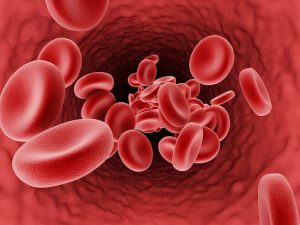
New research from Brown University has garnered new images of what is happening inside the affected red blood cells. The research team hopes to be able to model the hemoglobin fibers and their mechanisms in order to better understand how the disease works. Thus, they have created computer generated models of the processes.
The computer “uses detailed biomechanical data on how sickle hemoglobin molecules behave and bind with each other to simulate the assembly of a polymer fiber.” Previous researchers have run into the problem that there is simply too much data and not enough time for a computer to analyze it all. As the computer analyzes the cell’s data, the fibers are continuing to grow exponentially.
The researchers at Brown found a solution to this problem by using a mesoscopic adaptive resolution scheme (MARS). The MARS solution tracks the hemoglobin only at the ends of the growing polymer fibers. The model tracks the fibers until four layers have developed on each, at which point it reduces the resolution of that section of the hemoglobin. In this way, the MARS model tracks the important mechanisms of the fibers without getting bogged down by the abundance of information in the more minute details.
Sickle cell is not the only abnormal cell shape
The model was able to show how the fibers when they clump together differently, are able to produce other cell shapes than simply the sickle shape. The researchers were able to create individual models of each of the different cell shapes that the polymer fibers are capable of creating. They want to use this new information to seek new treatments for the disease.
There are currently only two approved drug treatments for sickle cell disease. One of these options involves increasing the fetal hemoglobin in patients. Fetal hemoglobin is what we are born with as babies. These are resistant to the polymerization processes of the infected sickle cell fibers, meaning they can’t be bent out of their normal shape.
The team at Brown University that is responsible for the new model hopes to continue to run tests with their MARS model using fetal hemoglobin in order to determine how it is that it prevents polymerization of the hemoglobin. These future tests could help determine exactly how much fetal hemoglobin is needed for it to take effect against sickle cell disease, which could perfect the dosage given to patients in prescriptions.
Related: Sickle cell disease in pregnant women increases risk of stillbirth and high blood pressure